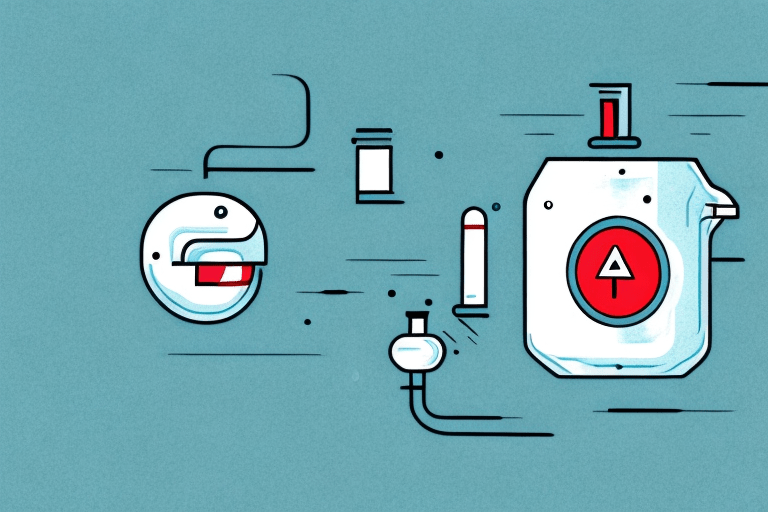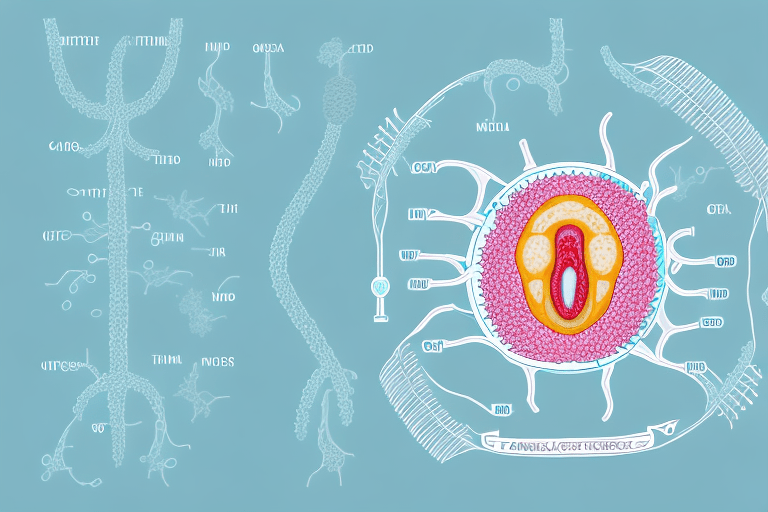Are you tired of waking up multiple times in the middle of the night because of the burning sensation in your chest? If so, you are not alone. Millions of people suffer from acid reflux, a condition where the stomach acid flows back up into the esophagus. While acid reflux can be caused by a variety of factors, your sleeping position may be contributing to your discomfort. In this article, we’ll explore the best side to sleep on to reduce acid reflux symptoms and other tips to help you get a good night’s sleep.
Understanding Acid Reflux
Before we delve into sleeping positions, it is essential to understand what acid reflux is and its common symptoms.
Acid reflux, also known as gastroesophageal reflux disease (GERD), is a condition where the acid in the stomach flows back up into the esophagus. The esophagus is the tube running from the mouth to the stomach, and irritation of this area can cause discomfort. In some cases, the stomach acid can even reach the mouth, leading to a sour or bitter taste. GERD affects approximately 20% of the population in the United States, and it can occur at any age, from infants to seniors.
Common Symptoms of Acid Reflux
The most common symptoms of acid reflux are a burning sensation in the chest, difficulty swallowing, a sore throat, and regurgitation of food or liquid. However, other symptoms may include bloating, nausea, coughing, wheezing, and hiccups. These symptoms can be mild or severe and may occur sporadically or frequently, depending on the individual.
Causes of Acid Reflux
Some common factors that can contribute to acid reflux include obesity, consuming large meals, spicy or fatty foods, caffeine, alcohol, smoking, and lying down immediately after eating. Additionally, pregnancy, hiatal hernia, and certain medications such as aspirin and ibuprofen can also increase the risk of developing acid reflux. It is important to note that not everyone who experiences these factors will develop acid reflux, and some individuals may experience symptoms without any identifiable cause.
Obesity is a significant risk factor for acid reflux because excess weight can put pressure on the stomach, causing the acid to flow back up into the esophagus. Consuming large meals can also contribute to acid reflux, as the stomach may not be able to properly digest all the food, leading to increased acid production. Spicy or fatty foods can irritate the lining of the stomach and esophagus, causing discomfort and acid reflux. Caffeine and alcohol can relax the muscles in the lower esophageal sphincter, allowing the acid to flow back up into the esophagus. Smoking can also weaken the lower esophageal sphincter and increase acid production.
It is important to identify the cause of acid reflux to properly manage and treat the condition. Lifestyle changes such as losing weight, avoiding trigger foods, and not lying down immediately after eating can help alleviate symptoms. Medications such as antacids, H2 blockers, and proton pump inhibitors can also be used to reduce acid production and relieve symptoms.
The Importance of Sleep Position
The position in which you sleep can significantly impact your acid reflux symptoms. So, it’s important to pay attention to how you are sleeping throughout the night.
How Sleep Position Affects Acid Reflux
Sleeping flat on your back can make acid reflux worse because it allows the stomach acid to flow back up into the esophagus, causing irritation. Sleeping on your stomach can also increase your risk of acid reflux, as it puts extra pressure on the stomach.
Sleeping on your left side is the best position to reduce acid reflux. When you sleep on your left side, gravity helps keep the stomach acid from flowing back up into the esophagus.
Other Factors to Consider for Sleep Comfort
To get the most out of your sleeping position, you should also consider your pillow and mattress. A pillow that is too flat or too high can exacerbate your acid reflux symptoms, so try to find a pillow that supports your head and neck without pushing them up too high.
Additionally, a mattress that is too soft can cause your body to sink in, creating a curve in your spine that can lead to stress on your lower back and upper neck.
Best Side to Sleep On for Acid Reflux Relief
Left Side Sleeping Benefits
Sleeping on your left side is the most beneficial position for acid reflux sufferers. Not only does it help prevent stomach acid from flowing back up into the esophagus, but it can also help reduce acid reflux symptoms such as heartburn and coughing.
A study published in The Journal of Clinical Gastroenterology found that participants who slept on their left side were less likely to experience acid reflux and were more likely to experience relief from their symptoms than those who slept on their right side or back.
Right Side Sleeping Disadvantages
Sleeping on your right side is not the best position for acid reflux sufferers. When you sleep on your right side, the stomach acid is more likely to flow back up into the esophagus, leading to irritation and discomfort.
Scientific Studies Supporting Left Side Sleeping
Several studies have found that left-side sleeping is the most beneficial position for those with acid reflux. In addition to the study published in The Journal of Clinical Gastroenterology, another study published in The Journal of Gastroenterology and Hepatology found that participants who slept on their left side experienced fewer acid reflux episodes than those who slept on their right side or back.
Other Sleep Position Adjustments to Reduce Acid Reflux
Elevating the Head of the Bed
Elevating the head of the bed by six to eight inches can also help reduce acid reflux symptoms. This is because gravity can keep the stomach acid in the stomach, preventing it from flowing back up into the esophagus.
Using a Wedge Pillow
If you don’t want to elevate the entire bed, you can use a wedge pillow. A wedge pillow elevates your upper body, allowing gravity to help keep the stomach acid in your stomach.
Avoiding the Supine Position
Sleeping on your back, also known as the supine position, can exacerbate acid reflux symptoms. However, if sleeping on your left side is uncomfortable or causes pain, try sleeping on your right side at an angle of about 30 degrees with your upper body elevated.
By making some simple adjustments to your sleeping position, you can reduce your acid reflux symptoms and get a better night’s sleep.










